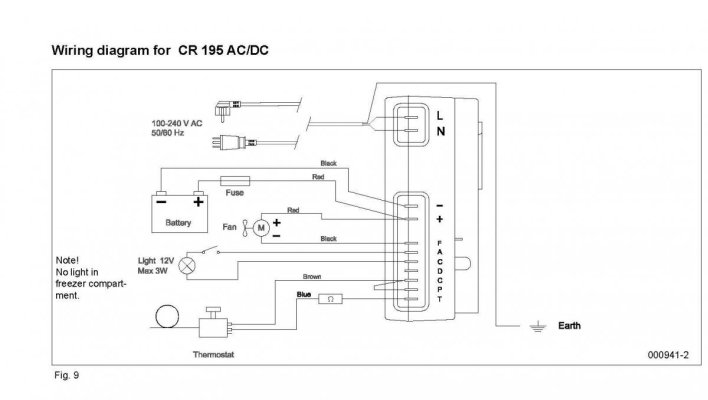My freezer has gone out. Well not completely, but 30 isn't cold ehough.
I have a Isotherm C195 unit, so its a fridge/freezer combo. Taking it out and sending to the shop means no refrigeration till it comes back. Not really an option as I live on the boat.
Is there an easy fix here?
open to suggestions
I googled your fridge / freezer and understand it has 1 compressor ? Is that correct ?
There are a couple of very easy checks, which you can do yourself.
I read it is fan cooled and your problem usually results from the ventilator failing. They pick up dust, gets into the bearing and ultimately the fan will fail. When the fan fails the compressor becomes too hot and the fridge will switch itself off on the high pressure safety. Result is that it won't be able to supply enough cooling energy (you cannot cool down the compressed liquid) and the result is that the freezer will stop functioning.
So before you ship it out, remove it from its location, plug it in and first check if the compressor switches on or not.
If the compressor switches on then check if the fan is still working. If the fan does not work, buy a new one and install it. 99 % chance the system will work again.
If the fan is running however then check the evaporator. If that is covered in dust the high pressure liquid can also not be cooled and the fridge / freezer won't function properly.
If that is also not the case i fear the problem is worse, then you may have lost gas and that is possible if the fridge has been switched off for a prolonged period of time.
In the old days the pipes in the fridges and freezers were made of copper, which would not deteriorate. in modern fridges / freezers they changed the copper for aluminum, which is much cheaper. Only problem is that Aluminum becomes poreus if the fridge / freezer sits idle for a prolonged period of time. Then the gas escapes and it cannot be repaired.
An easy way to check whether you lost gas is to switch the system on. The top part of the compressor should become warm / hot. If it stays cold or a bit warm you have lost gas.
Hope you will be able to find out which one it is ?

